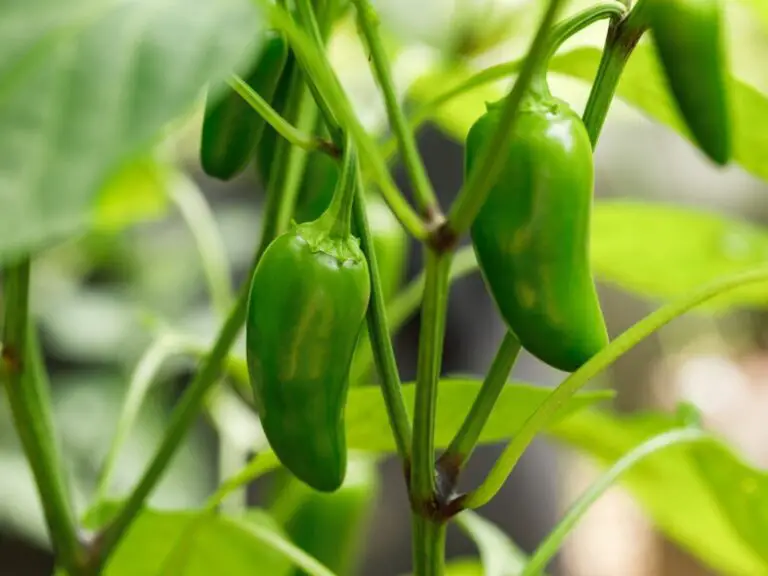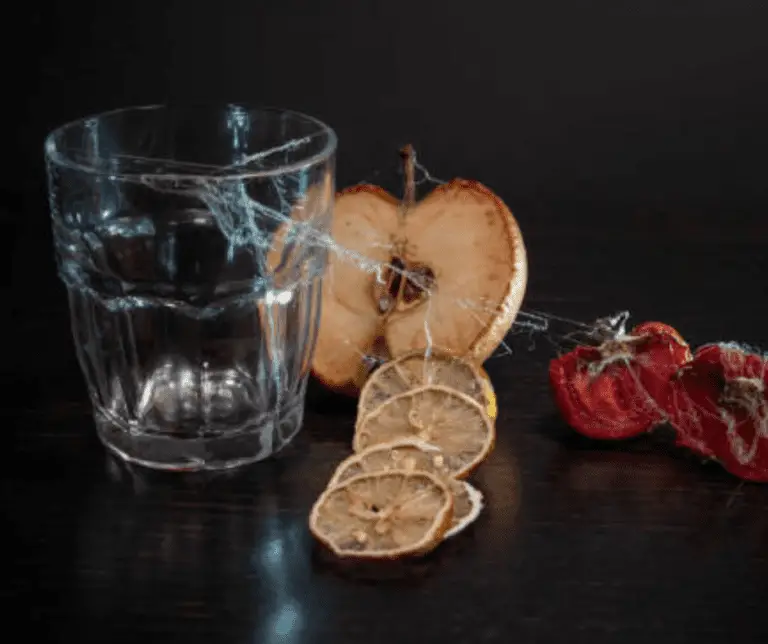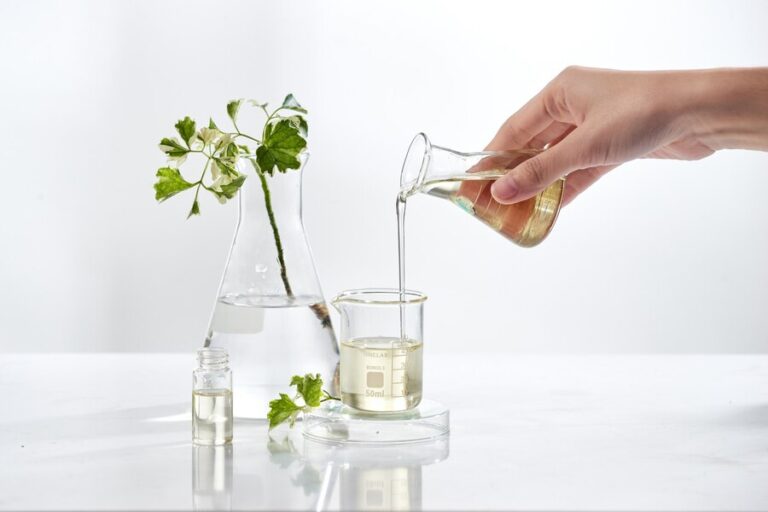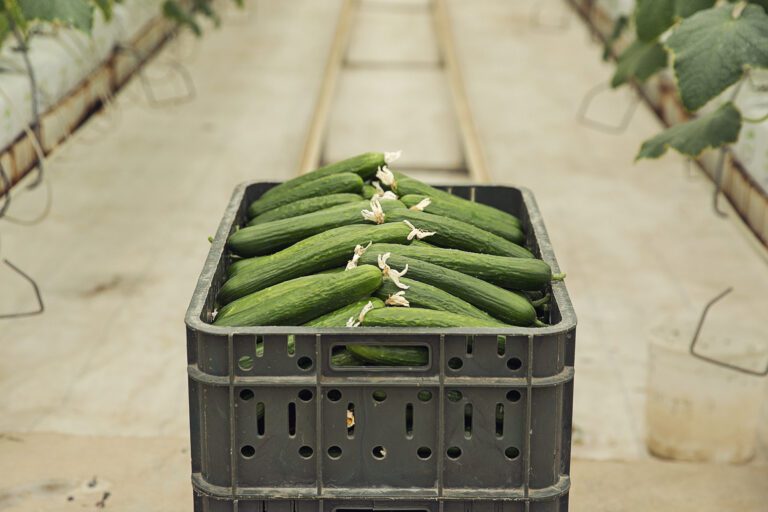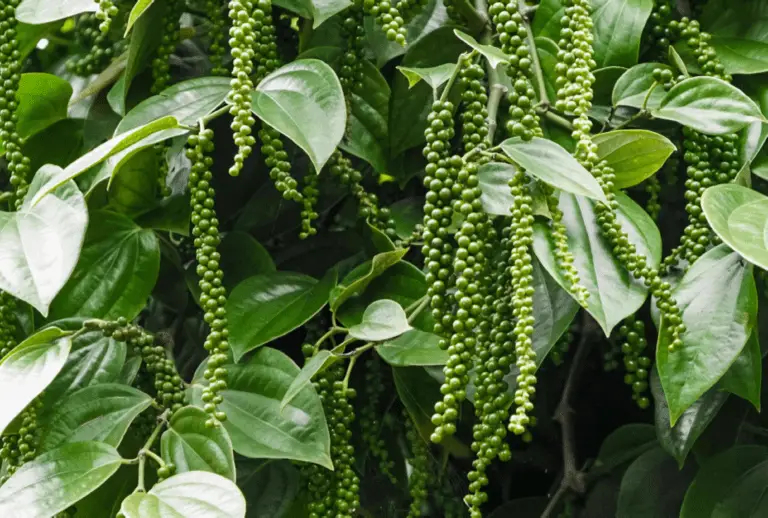Grow Lights Grow Tent Kits: A Review of the Top Products for Indoor Growing
Table of Contents
Benefits of Indoor Growing Systems for Plants

Indoor growing systems offer a multitude of benefits for plants, making them an increasingly popular choice among gardening enthusiasts. One key advantage is the ability to control and optimize environmental conditions, such as lighting, temperature, and humidity. This enables plants to receive the ideal growing conditions throughout the year, regardless of weather or seasonal limitations.
Moreover, indoor growing systems provide a space-efficient solution for gardening, making it possible to cultivate plants in small apartments, urban environments, or limited spaces. With the use of vertical gardening techniques and compact setups, growers can maximize their plant yield without sacrificing valuable living space. Additionally, these systems allow for year-round cultivation, ensuring a continuous supply of fresh produce or ornamental plants regardless of external factors.
Furthermore, indoor growing systems offer enhanced pest and disease control. By creating a controlled environment, growers can minimize the risk of infestations and infections that could damage or destroy their plants. This not only reduces the need for harmful pesticides, but it also promotes healthier and more vibrant growth. With these benefits in mind, it is no wonder that indoor growing systems are gaining popularity as a reliable and efficient method of plant cultivation.
• Control and optimize environmental conditions such as lighting, temperature, and humidity
• Provides ideal growing conditions throughout the year regardless of weather or seasonal limitations
• Space-efficient solution for gardening in small apartments, urban environments, or limited spaces
• Use of vertical gardening techniques and compact setups maximize plant yield without sacrificing living space
• Allows for year-round cultivation ensuring a continuous supply of fresh produce or ornamental plants
• Enhanced pest and disease control through creating a controlled environment
• Minimizes risk of infestations and infections that could damage plants
• Reduces the need for harmful pesticides
• Promotes healthier and more vibrant growth
Understanding the Importance of Grow Lights

Grow lights are a crucial component in indoor gardening systems, playing a vital role in providing the necessary light energy for plants to carry out photosynthesis. In an indoor environment, natural sunlight may not always be available or sufficient for optimal plant growth. Grow lights offer a practical solution by replicating the wavelengths of light that plants require for photosynthesis, ensuring they receive the energy needed to produce vital sugars and promote healthy foliage development.
One of the main advantages of using grow lights is the ability to control the light spectrum and intensity. Different types of plants have varying light requirements at different stages of growth. With grow lights, gardeners can tailor the light spectrum and intensity to match the specific needs of their plants, resulting in enhanced photosynthesis and better overall growth. Additionally, using grow lights allows for year-round cultivation, irrespective of seasonal variations or geographical limitations. This is especially beneficial for gardeners in regions with extreme climates or limited outdoor space, as they can still indulge in their passion for gardening and enjoy fresh produce throughout the year.
Factors to Consider When Choosing Grow Lights

When choosing grow lights for your indoor growing system, there are several key factors to consider. One of the most important factors is the light spectrum. Different plants have different light requirements, and it’s crucial to choose grow lights that provide the right spectrum for the specific plants you are growing. For example, leafy greens and herbs tend to do well with grow lights that emit a higher amount of blue light, while flowering plants often require a combination of red and blue light.
Another important factor to consider is the light intensity. The intensity of light affects not only the growth and development of plants but also their overall health and yield. Before purchasing grow lights, it’s essential to determine the desired light intensity for the specific plants you are growing. This can be measured in foot-candles or lux, and it’s recommended to refer to the light requirements provided by plant breeders or horticultural experts.
In addition to spectrum and intensity, it’s also important to consider the energy efficiency and lifespan of the grow lights. LED grow lights are known for their energy efficiency, as they consume less power than traditional fluorescent or HID lights while providing ample light for plant growth. Furthermore, LED grow lights have a longer lifespan, which not only saves money in the long run but also reduces the hassle of frequent bulb replacements.
Lastly, it’s crucial to consider the size and coverage area of the grow lights. The size and coverage area will depend on the size of your indoor growing space and the number of plants you plan to grow. It’s important to choose grow lights that can adequately cover the desired area and provide uniform light distribution to ensure that all plants receive sufficient light for optimal growth.
By considering factors such as light spectrum, intensity, energy efficiency, lifespan, and coverage area, you can make an informed decision when choosing the right grow lights for your indoor growing system. Ensuring that your plants receive the proper light will not only promote healthy growth but also maximize your overall yield.
Exploring Different Types of Grow Lights
When it comes to indoor growing systems, choosing the right type of grow lights is crucial for the success and health of your plants. Grow lights provide the essential light spectrum that plants need for photosynthesis, allowing them to grow and thrive even in environments where natural sunlight is limited. There are several different types of grow lights available on the market, each with its own unique set of features and advantages.
One popular type of grow light is the fluorescent light. Fluorescent lights are affordable, energy efficient, and emit a wide spectrum of light that is suitable for all stages of plant growth. They are particularly well-suited for seedlings and young plants due to their cool and gentle light output. Another option is the high-pressure sodium (HPS) light. HPS lights emit a yellowish light that is strong in the red and orange spectrum, which promotes blooming and fruiting. They are commonly used in commercial growing operations. LED lights are also gaining popularity in indoor gardening. LED lights are energy efficient, have a long lifespan, and can be custom-tailored to emit specific light wavelengths needed for different plant stages. They may have a higher upfront cost but can save energy and money in the long run. Ultimately, the type of grow light you choose will depend on your specific needs, budget, and the type of plants you are growing.
Top Features to Look for in Grow Lights
When selecting grow lights for your indoor growing system, there are several key features to consider. These features will ensure that your plants receive the optimal light spectrum, intensity, and coverage to support their growth and development.
Firstly, it’s important to look for grow lights that offer adjustable light spectrum options. Different stages of plant growth require different light wavelengths, with blue light being essential for vegetative growth and red light being crucial for flowering and fruiting stages. Opt for grow lights that provide a wide range of adjustable spectrum options to cater to these specific needs.
Secondly, consider the light intensity provided by the grow lights. Plants require a certain level of light intensity to carry out photosynthesis effectively. Look for grow lights that have adjustable intensity settings, allowing you to meet the specific requirements of your plants at different stages of growth.
Additionally, the coverage area of the grow lights is an important factor to consider. Different plants have different space requirements, and it’s crucial to ensure that the grow lights provide sufficient coverage for your indoor garden. Check the specifications of the grow lights to determine the recommended coverage area and choose accordingly.
Lastly, energy efficiency should not be overlooked. Opt for grow lights that are energy-efficient to reduce electricity costs and minimize heat emission. LED grow lights are particularly known for their energy-saving capabilities and long lifespan.
By considering these top features, you can confidently select grow lights that will provide your plants with the optimal light conditions for their growth and overall health.
Certainly! Here’s a breakdown of the top features to look for in grow lights for indoor gardening presented in a table format:
| Top Features to Look for in Grow Lights | Description |
|---|---|
| 1. Light Spectrum | – Provides a full spectrum of light including blue, red, and white wavelengths to support all growth stages. |
| 2. Adjustability | – Allows for adjustable intensity and spectrum settings to meet specific plant requirements at different growth stages. |
| 3. Energy Efficiency | – Ensures energy-efficient LED lights to reduce power consumption and environmental impact while maintaining high light intensity. |
| 4. Coverage Area | – Adequately covers the size of the indoor garden with options for adjustable coverage or modular designs. |
| 5. Durability and Lifespan | – Made from durable materials with a long lifespan, especially LED lights known for their longevity. |
| 6. Heat Management | – Incorporates effective heat dissipation mechanisms such as cooling fans or heat sinks to prevent overheating and damage to plants. |
| 7. Low Heat Output | – Minimizes heat output to avoid burning or stressing plants, particularly in confined indoor spaces. |
| 8. Dimmability | – Offers dimming capabilities to adjust brightness levels based on plant growth stage or environmental conditions. |
| 9. Warranty and Support | – Includes a reliable warranty and customer support for peace of mind and assistance in case of any issues. |
| 10. Affordability | – Balances quality and affordability within budget constraints by comparing features, performance, and price. |
Comparing the Best Grow Lights on the Market
When it comes to choosing the best grow lights for your indoor gardening system, there are several key factors to consider. One important aspect to evaluate is the light spectrum provided by the grow light. Different plants have varying light requirements at different stages of growth, so it’s crucial to select a grow light that offers a full spectrum of light, including both blue and red wavelengths. This will ensure that your plants receive the necessary light for photosynthesis and optimal growth.
Another factor to consider is the wattage and energy efficiency of the grow light. Higher wattage lights generally offer more intense light output, but they also consume more electricity. It’s important to strike a balance between the light intensity required by your plants and the energy cost of running the grow lights. LED grow lights are known for their energy efficiency and can provide sufficient light intensity while minimizing energy consumption. Additionally, LED lights have a longer lifespan compared to other types of lighting, reducing the need for frequent bulb replacements.
Evaluating the Performance of Grow Tent Kits
Grow tent kits offer a convenient solution for indoor gardeners who want to create the perfect environment for their plants. When evaluating the performance of grow tent kits, there are several key factors to consider. Firstly, the quality of the materials used in the construction of the tent is crucial. A sturdy and durable tent will provide a stable and secure environment for your plants to thrive. Additionally, the design and layout of the tent should be optimized for efficient plant growth. Look for features such as multiple access points, ventilation ports, and reflective interior walls to ensure maximum light distribution and airflow.
Another important aspect to consider when evaluating the performance of grow tent kits is the effectiveness of the light fixtures included. The lighting system plays a vital role in the growth and development of plants, so it is essential to choose a kit that provides adequate light intensity and spectrum. LED lights have become increasingly popular in recent years due to their energy efficiency and customizable spectrum options. However, different plants have different light requirements, so it is important to select a kit that offers a suitable lighting solution for your specific plant species. By ensuring that the grow tent kit includes high-quality materials and an effective lighting system, you can create an optimal environment for your plants to flourish.
Key Considerations When Selecting Grow Tent Kits
When selecting grow tent kits for your indoor gardening needs, there are several key considerations that should be taken into account. First and foremost, it is important to assess the size and dimensions of the grow tent that you require. The size of the tent will determine the amount of space available for your plants to grow, so it is crucial to choose a kit that can accommodate the number of plants you wish to cultivate. Additionally, consider the ceiling height of the tent, as taller plants may require more vertical space. Ensuring that the grow tent kit is the appropriate size will help to promote healthy and prolific plant growth.
Another important factor to consider when selecting a grow tent kit is the type and quality of the materials used in its construction. The tent should be made from durable, tear-resistant fabric that is also lightproof to prevent any unwanted light from entering or escaping the tent. Additionally, the frame of the tent should be sturdy and stable to provide a secure environment for your plants. By choosing a grow tent kit with high-quality materials, you can ensure that your plants are protected and provided with the optimal conditions for growth.
In conclusion, when selecting a grow tent kit, it is crucial to consider the size and dimensions of the tent as well as the quality of its construction. By carefully evaluating these key factors, you can choose a kit that will provide the ideal environment for your indoor gardening endeavors. Whether you are a novice or experienced gardener, investing in a high-quality grow tent kit will create a conducive atmosphere for your plants to thrive. So, take the time to assess your needs and choose a kit that suits your specific requirements.
Exploring Different Types of Grow Tent Kits
When it comes to growing plants indoors, having the right equipment is crucial for their success. One essential component of an indoor growing system is a grow tent kit. These kits offer an enclosed space where plants can thrive, providing them with the ideal environment for growth.
There are several different types of grow tent kits available on the market, each with its own unique features and benefits. One popular option is the traditional grow tent kit, which consists of a tent-like structure made from durable materials such as canvas or polyester. These tents are equipped with reflective lining to maximize light distribution and typically come with ventilation and carbon filter systems to control odor and temperature. Another type to consider is the cabinet-style grow tent kit, which is designed to be compact and discreet, perfect for smaller spaces. These kits often have built-in lighting and ventilation systems, making them a convenient and efficient choice for indoor gardening.
No matter which type of grow tent kit you choose, it is important to consider factors such as size, durability, and ease of setup. Additionally, it is advisable to research and compare different brands and models to ensure you are investing in a high-quality product that suits your specific needs. By exploring the different types of grow tent kits available, you can make an informed decision that will set the stage for a successful indoor growing experience.
Comparing the Best Grow Tent Kits on the Market
When it comes to choosing the best grow tent kit for your indoor gardening needs, it is important to consider a few key factors. First and foremost, you will want to ensure that the size of the grow tent is suitable for your specific needs. Whether you are planning to grow herbs, flowers, or fruits and vegetables, having enough space for your plants to thrive is crucial. Additionally, you will want to examine the quality of the materials used in the construction of the grow tent. Look for durable fabrics that are resistant to tearing and have strong zippers that won’t snag or break easily.
Another important aspect to assess is the presence of ventilation features in the grow tent kit. Proper airflow is essential for maintaining optimal growing conditions and preventing issues such as mold or mildew. Look for kits that offer easy access to ventilation ports, as well as options for installing fans or air filters. Keep in mind that good ventilation not only benefits your plants, but can also help to regulate temperature and humidity levels, creating a more conducive growing environment. Consider these factors and compare different grow tent kits to find the one that best meets your requirements for size, durability, and ventilation features.
Understanding the Role of Ventilation in Indoor Growing
Ventilation plays a crucial role in indoor growing systems, as it directly affects the health and productivity of plants. Adequate airflow and circulation are essential for ensuring a healthy growing environment and preventing the build-up of excessive heat and humidity. Proper ventilation helps to regulate temperature, control moisture levels, and maintain a steady supply of fresh air for photosynthesis.
One of the primary benefits of ventilation is the removal of stale air and the exchange of carbon dioxide (CO2) with oxygen (O2). During photosynthesis, plants use CO2 to produce energy while releasing O2 as a byproduct. Without proper ventilation, the concentration of CO2 can become depleted, hindering plant growth and development. On the other hand, excessive levels of CO2 can be detrimental, leading to a reduced ability of plants to absorb O2, nutrient deficiencies, and stunted growth. By facilitating the exchange of gases, ventilation ensures a healthy balance of CO2 and O2, thereby promoting optimal plant growth.
In addition to gas exchange, ventilation also aids in controlling temperature and humidity levels within an indoor growing system. Plants require specific temperature ranges for optimal growth, and excessive heat can cause stress, wilting, and even death. Ventilation helps to dissipate heat, preventing it from accumulating in the growing area and maintaining a suitable temperature for plants. Furthermore, ventilation helps to remove excess moisture, reducing the risk of fungal diseases, mold, and mildew. Controlling humidity levels is particularly important during the flowering stage, as high humidity can lead to issues like bud rot. Proper airflow and ventilation ensure that plants can transpire efficiently, preventing the accumulation of excessive moisture and maintaining a healthier growing environment.
Tips for Setting up an Efficient Indoor Growing System
When it comes to setting up an efficient indoor growing system, there are a few tips that can help ensure the success of your plants. First and foremost, it is crucial to choose the right location for your indoor garden. Look for an area that receives ample natural light or consider using supplemental grow lights to provide your plants with the necessary light spectrum.
Next, selecting the appropriate grow medium is essential. Whether you opt for soil, coco coir, or hydroponics, each medium has its advantages and considerations. Make sure to research and select the medium that aligns with your specific needs and gardening goals. Additionally, providing adequate air circulation and ventilation is vital for a thriving indoor garden. This helps to prevent the buildup of excess humidity, molds, and mildew, and ensures that your plants receive fresh air for optimal growth. By implementing these tips, you can create a productive and efficient indoor growing system.
Troubleshooting Common Issues in Indoor Growing Systems
When it comes to indoor growing systems, it’s important to be prepared for any potential issues that may arise. Troubleshooting common problems can help ensure the success of your indoor garden and prevent unnecessary setbacks. One common issue that many growers face is nutrient deficiencies. It’s vital to monitor your plants closely and check for any signs of yellowing leaves, stunted growth, or discoloration. These symptoms could indicate a lack of essential nutrients, such as nitrogen, phosphorus, or potassium. Adjusting your nutrient solution accordingly can help rectify the issue and promote healthy plant growth.
Another common problem that indoor gardeners encounter is pest infestation. Pests such as aphids, spider mites, and fungus gnats can quickly wreak havoc on your plants if left untreated. To prevent these unwanted visitors, it is important to establish a regular pest control routine. This can involve regularly inspecting your plants for any signs of infestation, using organic pest control methods, and maintaining proper hygiene in your indoor grow space. Additionally, implementing preventive measures such as using sticky traps or introducing beneficial insects can help keep pests at bay. By addressing nutrient deficiencies and pest infestations promptly, you can minimize any potential damage to your plants and ensure a thriving indoor garden.
How do indoor growing systems benefit plants?
Indoor growing systems provide a controlled environment for plants, allowing them to grow year-round regardless of external weather conditions. They also offer the ability to optimize lighting, temperature, and humidity levels, resulting in faster growth and higher yields.
Why is understanding the importance of grow lights crucial in indoor growing systems?
Grow lights are essential in indoor growing systems as they mimic natural sunlight, providing the necessary light spectrum for plant photosynthesis. Understanding their importance helps ensure that plants receive adequate and appropriate lighting for optimal growth and development.
What factors should be considered when choosing grow lights?
Factors to consider when selecting grow lights include the light spectrum, intensity, energy efficiency, lifespan, and the specific needs of the plants being grown. It’s also crucial to consider the size of the growing area and the available budget.
What are the different types of grow lights commonly used in indoor growing systems?
Common types of grow lights used in indoor growing systems include fluorescent lights, high-intensity discharge (HID) lights (such as metal halide and high-pressure sodium), and light-emitting diode (LED) lights. Each type has its own advantages and considerations, depending on the plants being grown.
What are the top features to look for in grow lights?
When selecting grow lights, important features to consider include adjustable light spectrum, high energy efficiency, a wide coverage area, durability, and the ability to dissipate heat effectively. Additionally, dimmable options and remote control capabilities can enhance convenience and flexibility.
How can I compare the best grow lights available on the market?
To compare grow lights, consider factors such as their light spectrum, wattage, efficiency, lifespan, customer reviews, and cost. Additionally, look for reputable brands and consult expert opinions or online resources for detailed comparisons and recommendations.
What should be considered when selecting grow tent kits?
When choosing grow tent kits, important considerations include the size and material of the tent, the availability of proper ventilation and light reflection, the included accessories (such as hanging bars and storage pockets), and the overall durability and quality of the kit.
What are the different types of grow tent kits commonly used in indoor growing?
Common types of grow tent kits include small-sized tents for personal use, medium-sized tents for intermediate growers, and large-sized tents for commercial operations. Each type varies in terms of dimensions and features to accommodate different growing needs.
How can I compare the best grow tent kits on the market?
To compare grow tent kits, consider factors such as the tent’s material quality, available sizes, included accessories, ease of assembly, customer reviews, and cost. Researching reputable brands and seeking expert opinions can also aid in making an informed decision.
Why is ventilation important in indoor growing systems?
Ventilation plays a crucial role in indoor growing systems as it helps regulate temperature, humidity, and carbon dioxide levels. Proper ventilation ensures that plants receive fresh air and prevents the buildup of excess heat, moisture, and potentially harmful gases.
What tips can help me set up an efficient indoor growing system?
To set up an efficient indoor growing system, consider optimizing lighting, temperature, humidity levels, and ventilation. Use proper grow lights, monitor and adjust environmental conditions regularly, implement a suitable watering and fertilization schedule, and maintain cleanliness and hygiene in the growing area.
What are some common issues that can arise in indoor growing systems?
Common issues in indoor growing systems include nutrient deficiencies, pest infestations, over or under-watering, inadequate lighting, improper pH levels, and poor air circulation. Troubleshooting these issues promptly and effectively is essential for the success of the indoor growing system.

